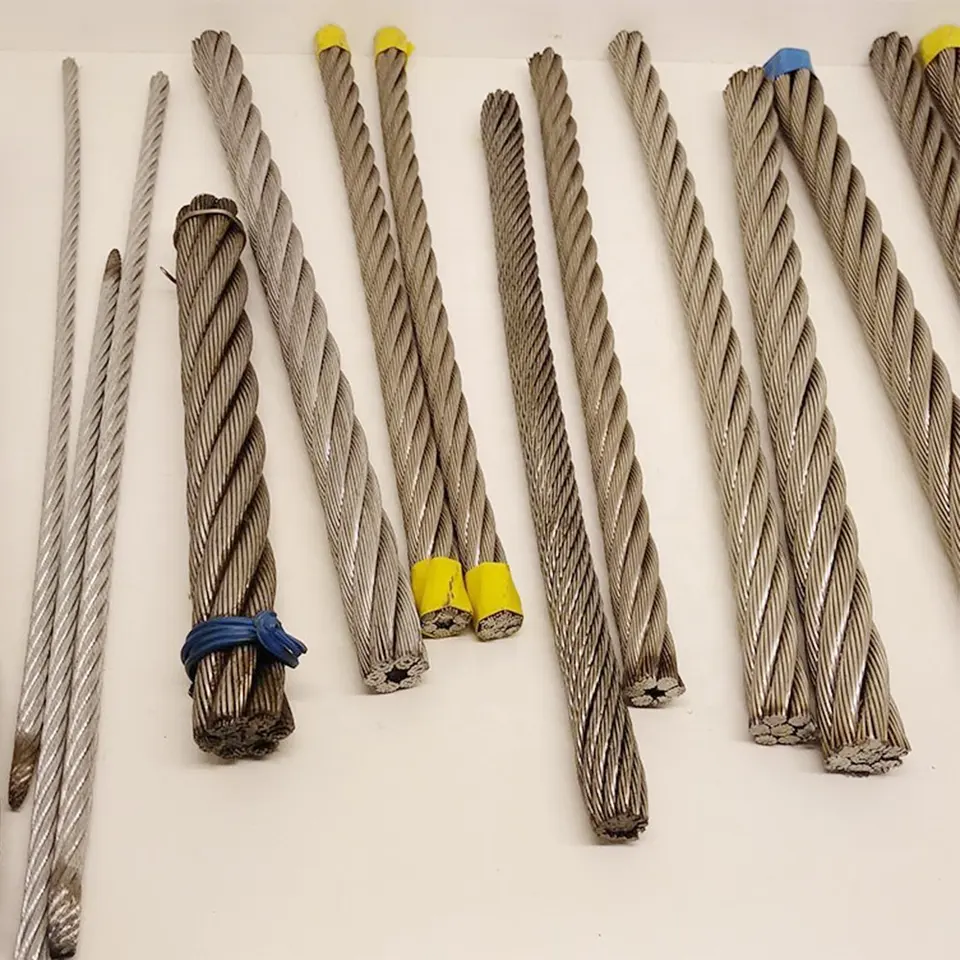How To Use Stainless Steel Wire Rope
Stainless steel cable assembly is crafted from multiple strands of stainless steel wire that are intricately twisted together to produce a more sizable and sturdier cable. This type of cable has a myriad of potential applications. It is offered in various sizes and grades. However, it is susceptible to corrosion, underscoring the importance of proper utilization to prevent harm.
Stainless Steel Wire Cable
Steel wire cable serves as a frequently employed building material across numerous industrial and commercial fields. Its attributes encompass an array of features including strength, pliability, and resistance to corrosion.
Two primary categories of steel wire cables exist:
The initial variety is galvanized wire cable, which is layered with zinc to ward off rust formation. This substance isn't suited for marine circumstances. Additionally, its protective coating will erode over time. The second type of steel wire cable is fashioned from stainless steel. Unlike galvanized variants, stainless steel cables showcase exceptional resistance to corrosion.
Aside from their corrosion-resistant attributes, galvanized wire cables are more economical compared to stainless steel alternatives. They also possess a lighter weight. However, they lack the robustness of stainless steel counterparts. While galvanized wire cable exhibits greater corrosion resistance in contrast to stainless steel, it remains vulnerable in harsh surroundings.
Utilizations of Stainless Steel Wire Cable
Stainless steel wire cables find widespread employment in civil engineering, aerospace, refrigeration, maritime activities, and other industrial applications. They prove particularly valuable in securing cargo and contributing a decorative facet to architectural designs. In the maritime sector, stainless steel wire cables shine due to their resistance to corrosion and their robustness. They find roles in mooring lines, anchor lines, and fishing lines.


The extent of corrosion resistance in stainless steel wire cables primarily hinges on their chemical composition. Wires with elevated chromium content demonstrate enhanced durability against corrosive conditions, diverging from galvanized wire cables. Furthermore, the inclusion of nickel amplifies wire strength.
Use in Damp Environments
Stainless steel wire cables emerge as a popular alternative for cable assembly materials. Their marked resistance to corrosion renders them advantageous in several ways. Their adaptability positions them as an optimal choice for diverse applications. Selecting the most suitable wire cable for each scenario holds paramount importance. Presented below are a handful of pointers to guide you in choosing the finest wire cable.
While it doesn't offer a flawless remedy, galvanized steel is often favored in settings where moisture is a factor. Galvanized steel entails a zinc coating to counteract rust development. Nonetheless, it remains vulnerable to corrosive elements, especially in submerged saltwater settings.
Grades of Stainless Steel Wire Cable
If you've had any experience with stainless steel wire cables, you've probably encountered either 304 or 316 variants. Both exemplify corrosion-resistant steel types commonly embraced within the maritime industry. However, nuanced distinctions exist between these two grades.
One distinguishing factor between these stainless steel grades lies in their molybdenum content. Molybdenum contributes to steel fortification and reinforcement, serving as an effective deterrent against corrosion.
Both 304 and 316 are categorized as austenitic stainless steel. This classification is renowned for its resilience and tensile strength. These grades boast widespread utilization in diverse applications. They facilitate facile welding and are materials amenable to recycling.
In comparison to 316, 304 stainless steel contains higher carbon levels, thereby enhancing its flexibility. Moreover, 304 is more malleable. Although it surpasses 316 in corrosion resistance, it remains susceptible to pitting corrosion.
Type 304 stainless steel is a standard option for fabricating wire cables. While it may not match the strength of grade 316, it still delivers remarkable corrosion resistance. This attribute can be attributed to its composition of 18% chromium and 2% molybdenum, both potent agents against corrosion.
Contact: Bonny Zhu
Phone: +8613854893387
E-mail: info@stainless-wire-rope.net
Add: Wanda plaza, Taian City, Shandong Province,China